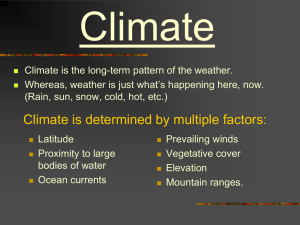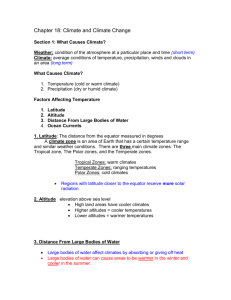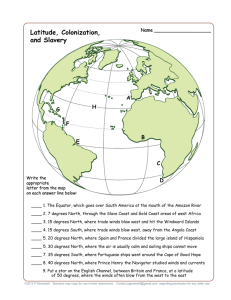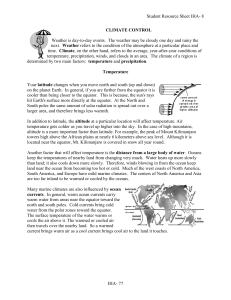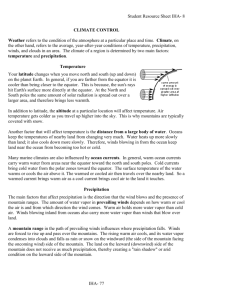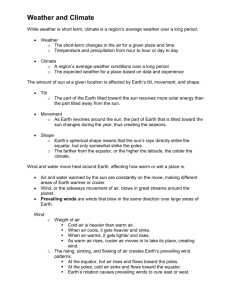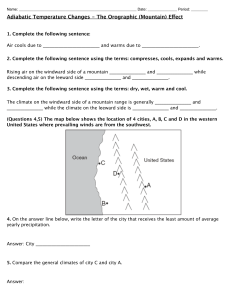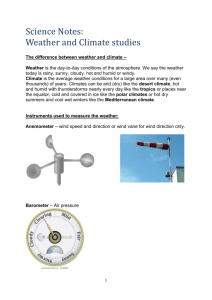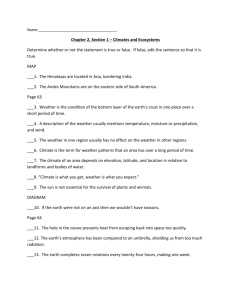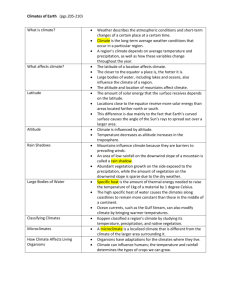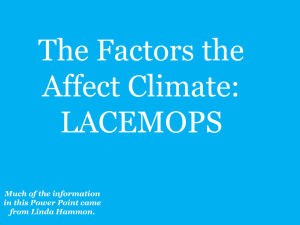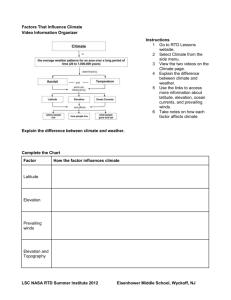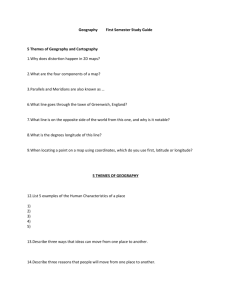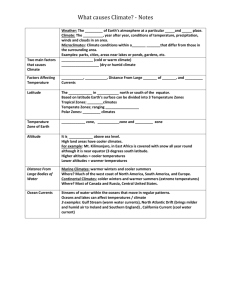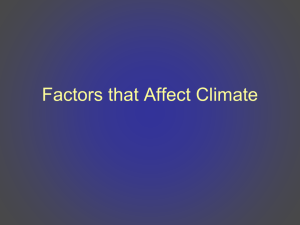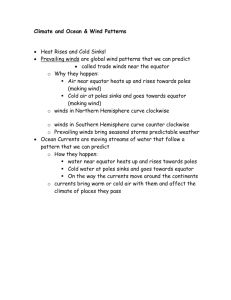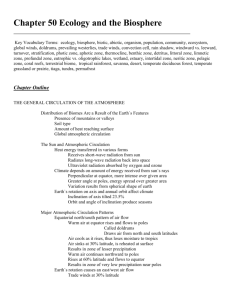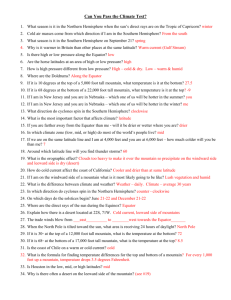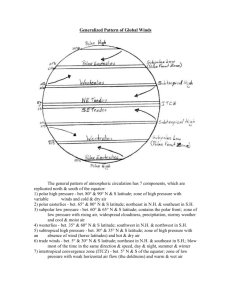Factors That Affect Climate Activity Introduction: Climate is
advertisement
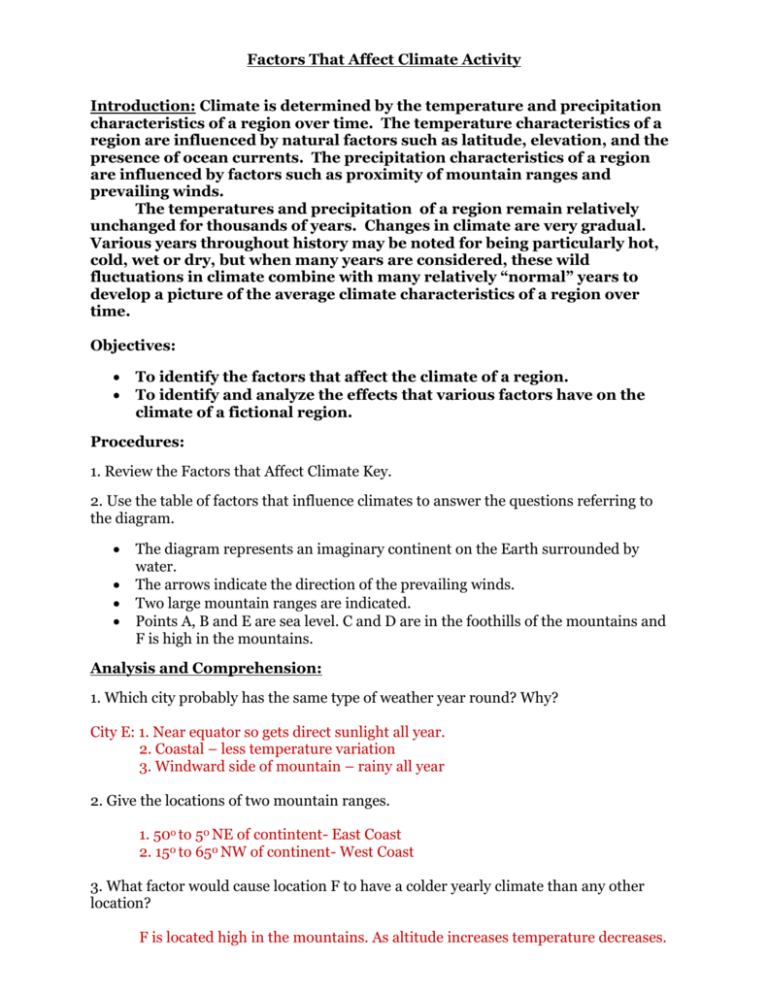
Factors That Affect Climate Activity Introduction: Climate is determined by the temperature and precipitation characteristics of a region over time. The temperature characteristics of a region are influenced by natural factors such as latitude, elevation, and the presence of ocean currents. The precipitation characteristics of a region are influenced by factors such as proximity of mountain ranges and prevailing winds. The temperatures and precipitation of a region remain relatively unchanged for thousands of years. Changes in climate are very gradual. Various years throughout history may be noted for being particularly hot, cold, wet or dry, but when many years are considered, these wild fluctuations in climate combine with many relatively “normal” years to develop a picture of the average climate characteristics of a region over time. Objectives: To identify the factors that affect the climate of a region. To identify and analyze the effects that various factors have on the climate of a fictional region. Procedures: 1. Review the Factors that Affect Climate Key. 2. Use the table of factors that influence climates to answer the questions referring to the diagram. The diagram represents an imaginary continent on the Earth surrounded by water. The arrows indicate the direction of the prevailing winds. Two large mountain ranges are indicated. Points A, B and E are sea level. C and D are in the foothills of the mountains and F is high in the mountains. Analysis and Comprehension: 1. Which city probably has the same type of weather year round? Why? City E: 1. Near equator so gets direct sunlight all year. 2. Coastal – less temperature variation 3. Windward side of mountain – rainy all year 2. Give the locations of two mountain ranges. 1. 50o to 50 NE of contintent- East Coast 2. 150 to 650 NW of continent- West Coast 3. What factor would cause location F to have a colder yearly climate than any other location? F is located high in the mountains. As altitude increases temperature decreases. 4. What 3 factors would cause location E to have the greatest annual rainfall. 1. Direction of prevailing winds indicates that E is on the Windward side of the mt. (rain shadow). 2. Latitude – near the equator – low pressure area will get more rainfall. 3. Coastal – Marine climate/more rainfall. 5. Which location, C or D, would you expect to have the greater annual rainfall? Why? City D is on the windward side of the mountain and coastal. 6. What is the direction of the wind in the region above and below 600 N and S latitudes? 60 N = SW, 60 S = NW Polar Easterlies Between 600 and 30o N and S latitude? In the N = NE, In the S = SE (Westerlies) Between 300 N and S latitudes and the equator? In the N = SW, In the S = NW (Trade Winds) 7. What could be the reason for the change in wind direction? 1. Air moves from high to low pressure. 2. Follows Global Wind patterns 8. Which location, A or B, would you expect to have the greater range in temperature during the year? City A Explain your answer. City A is inland/continental. It is NOT near a body of water which would regulate temperature. Therefore, there will be more variation in temperatures. Use the globe to find two cities in similar locations. What are the cities? __________________________________________________________ 9. What 3 factors would cause the climate in location D to be cooler than at location B? 1. Higher latitude – further North 2. West coast of continent – cold current affects air temperature 3. In foothills (B is at sea level), so altitude is higher. Use the globe to find a cities in a similar locations. ____________________________________________________________
